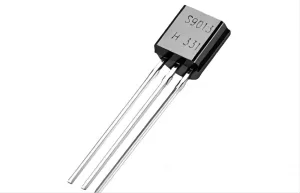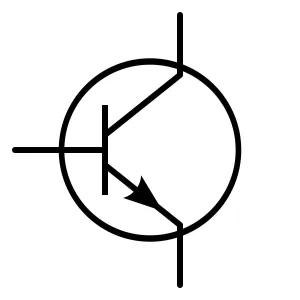
Thyristor vs Transistor: Unveiling the Differences and Best Uses
November 21 2023 
Inquiry
Global electronic component supplier AMPHEO PTY LTD: Rich inventory for one-stop shopping. Inquire easily, and receive fast, customized solutions and quotes.
QUICK RFQ
ADD TO RFQ LIST
When we explore the world of semiconductors, we come across two amazing devices: transistors and thyristors. These adaptable parts have completely changed the electronics sector, and they have all had a unique impact on the development of signal processing and power control. Despite the fact that both devices are necessary for modifying electrical signals, there are notable differences between their suitability, applications, and working mechanisms. To unravel the intricacies of thyristors and transistors, in this blog, we will delve into their unique characteristics, compare their functionalities, and explore their best uses in various applications.
What are Thyristors?
Thyristors, which are semiconductor devices that function as bistable switches and have two stable states—on and off—are also referred to as silicon-controlled rectifiers, or SCRs. Thyristors are essential in a wide range of applications, from power transmission and motor control to heating systems and lighting control. Transistors, on the other hand, can switch and amplify signals. Instead, thyristors are specifically made to control high currents and voltages.
Thyristor Symbol

Thyristor Modules
For power control applications, thyristor modules—compact assemblies of several thyristors—offer a practical and effective solution. These modules reduce the number of components and simplify circuit design by combining thyristors, gate drivers, and protection circuitry into a single package. A compact form factor can be maintained while power control capabilities are improved by integrating several thyristors into a single module.What are Transistors?
Contrarily, transistors are semiconductor devices with the ability to switch and amplify signals. They are composed of two back-to-back diodes made up of three semiconductor layers. Transistors, in contrast to thyristors, do not latch, which means that unless a tiny control signal is applied to the base terminal, they stay in the off state. Greater current flow between the collector and emitter terminals of the transistor is made possible by this control signal, which causes the transistor to conduct.
Transistor Symbol

Thyristor vs Transistor
Although they are both semiconductor devices, thyristors and transistors operate differently and have different applications. Because of their tendency to latch, thyristors need an outside signal to switch from the conducting state to the non-conducting state. On the other hand, transistors that are in the amplification mode can control current flow with a small control signal. Switching behavior: Thyristors have latching behavior, which means that once they are triggered, they stay in the conducting state even if the trigger signal is cut off. They are appropriate for applications that need high current flow for prolonged periods of time because of this feature. Conversely, transistors do not latch. Until a tiny control signal is applied to the base terminal, they stay in the off state. Greater current flow between the collector and emitter terminals of the transistor is made possible by this control signal, which causes the transistor to conduct. After the removal of the control signal, the transistor goes back to its off state. Current control: High-power switching applications are the main use for transistors. Because of their ability to manage high currents and voltages, they are perfect for managing heating elements, power transmission systems, and motors. Transistors are more adaptable electronics because they can control current as well as amplify signals. They are extensively utilized in circuits for signal processing, including logic gates and amplifiers. Turn-off mechanism: Specific methods, like reverse biasing, commutation circuits, or lowering the anode current below the holding current, are needed to turn off a thyristor. To restore control over current flow and stop accidental conduction, these techniques are required. All it takes to turn off a transistor is to remove the control signal that is applied to the base terminal. This is a simple process that uses very little power.Video related to Thyristor vs Transistor
How Thyristors Work?
The manufacturing of thyristors involves a series of intricate steps, including:- Crystal Growth: A large single-crystal ingot is formed by subjecting high-purity silicon to a process known as Czochralski pulling.
- Wafer Slicing: Next, the silicon ingot is cut into thin wafers, each of which acts as the foundation for a separate thyristor device.
- Doping and Diffusion: To produce the essential P-N junctions that are the cornerstone of the thyristor's functioning, impurities like phosphorus and boron are added to the silicon wafers. This process, called doping, is accomplished by a number of methods, such as diffusion and ion implantation.
- Metallization: To make electrical connections to the thyristor's terminals easier, contact regions—typically composed of aluminum or molybdenum—are deposited onto the wafer.
- Encapsulation: To guarantee the processed wafers' longevity and dependability under varied operating circumstances, they are subsequently encapsulated in protective containers made of plastic or ceramic.
- Testing and Evaluation: Strict testing protocols are used to confirm the electrical properties and functionality of the thyristors that are produced.
How do Transistors Work?
Step 1: Forward-Biasing the Emitter-Base Junction Since the positive and negative terminals of a voltage source are connected to the emitter and base, respectively, the emitter-base junction is forward-biased. Electrons can move from the emitter to the base thanks to this forward bias. Step 2: Reverse-Biasing the Base-Collector Junction The positive terminal of a voltage source is connected to the collector and the negative terminal to the base when there is a reverse-biased base-collector junction. The majority of electrons are unable to move from the base to the collector due to this reverse bias. Step 3: Applying a Small Voltage to the Base The base-collector junction's electric field changes when a small voltage is applied to it, allowing a tiny current to flow from the emitter to the collector. The flow of a much larger current between the emitter and the collector, known as the collector current, can be regulated by this smaller current, called the base current. Step 4: Amplifying or Switching Signals The transistor's current gain, 'β', is the ratio of the collector current to the base current. A very small signal at the base can control a much larger signal at the collector thanks to this very high gain. There are two primary modes of operation for transistors: switching and amplification. The transistor increases the voltage or current gain of an input signal when it is in the amplification mode. Applications like oscillators, signal processing circuits, and amplifiers require this amplification. When the transistor is in switching mode, it functions as a switch and turns on and off an input signal. Applications like logic gates, digital circuits, and power control systems require this switching capability.What does Thyristor do?
Universal Applications of Thyristor
- Motor control: Thyristors are used in a variety of applications, such as elevators, pumps, compressors, and traction systems, to control the speed and torque of electric motors.
- Power transmission: In high-voltage power transmission systems, thyristors are essential for regulating the long-distance flow of electricity.
- Heating systems: To ensure precise temperature control and energy efficiency in industrial processes, thyristor power controllers are used to control the power delivered to heating elements.
- Lighting control: In lighting control systems, thyristors are used to control lamp brightness, offering energy-efficient dimming and switching capabilities.
Thyristors for Heater Control
Sustaining precise temperature control is crucial for guaranteeing both process efficiency and product quality in industrial processes like plastic molding and metal fabrication. Process control and energy savings are achieved through precise heating element regulation provided by thyristor power controllers, which can withstand high current and voltage levels.What does a Transistor do?
- Amplifiers: Radio receivers and audio amplifiers are two examples of devices that can be made possible by using transistors to amplify weak signals.
- Logic gates: Transistors, which carry out AND, OR, and NOT operations, are the fundamental components of digital logic circuits.
- Signal processing: Filtering, modulation, and demodulation are just a few of the uses for transistors in signal processing.
Conclusion
Transistors and thyristors are key components of technological advances in the rapidly changing field of electronics. They can handle a broad range of applications thanks to their unique qualities and complimentary strengths, which are changing the way we interact with electronics and the environment. Transistors are superior at current regulation and signal amplification, but thyristors are the best when it comes to high-power switching. These marvels of semiconductor technology work in harmony to spur innovation and mold the direction of electronics in the future.Related Articles
- ·Stratix 10 VS Stratix V: Which FPGA is Right for Your Next Project?
- ·Intel Xeon Platinum 8454H vs AMD EPYC: Which Reigns Supreme?
- ·A Deep Dive into the AMD EPYC 4564P Processor
- ·MSP430F5438A vs MSP430F5529: A Detailed Analysis of Their Capabilities
- ·Comparing MSP430F6659 and MSP430F5419A: Which One is Right for Your Project?
- ·Exploring the Features of MSP430F5529 and MSP430F5638 Microcontrollers
- ·Demystifying 20 Microcontroller Projects for Beginners
- ·Unveiling the Ultimate Guide to Microcontroller Programming
- ·4680 Battery: Unveiling the Power Potential of the Next-Gen Cell
- ·Exploring the Case Studies on Arduino Applications
Populer Posts
